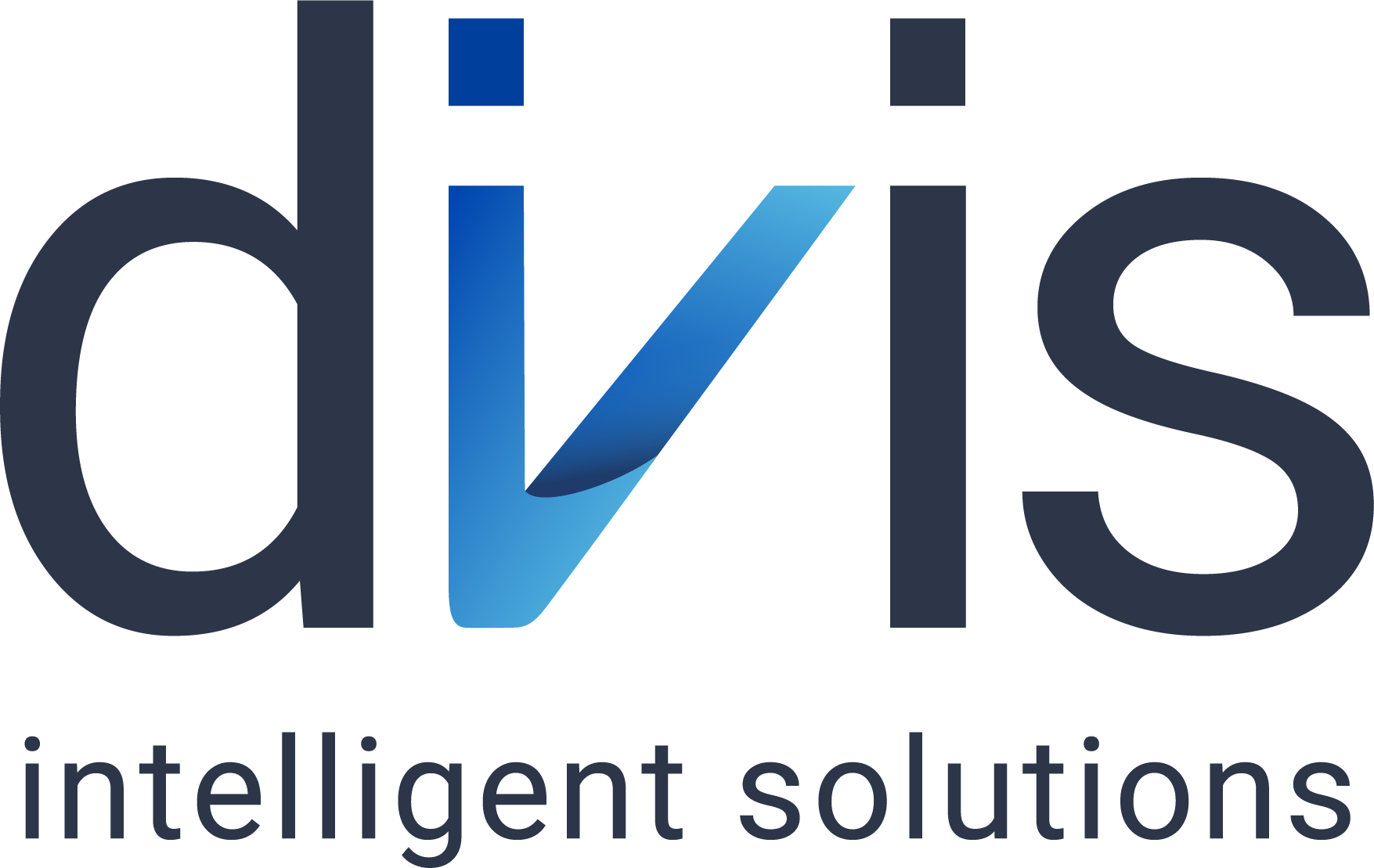Automatic Machine
Learning in
Microsoft Excel
Automatic Machine
Learning in
Microsoft Excel
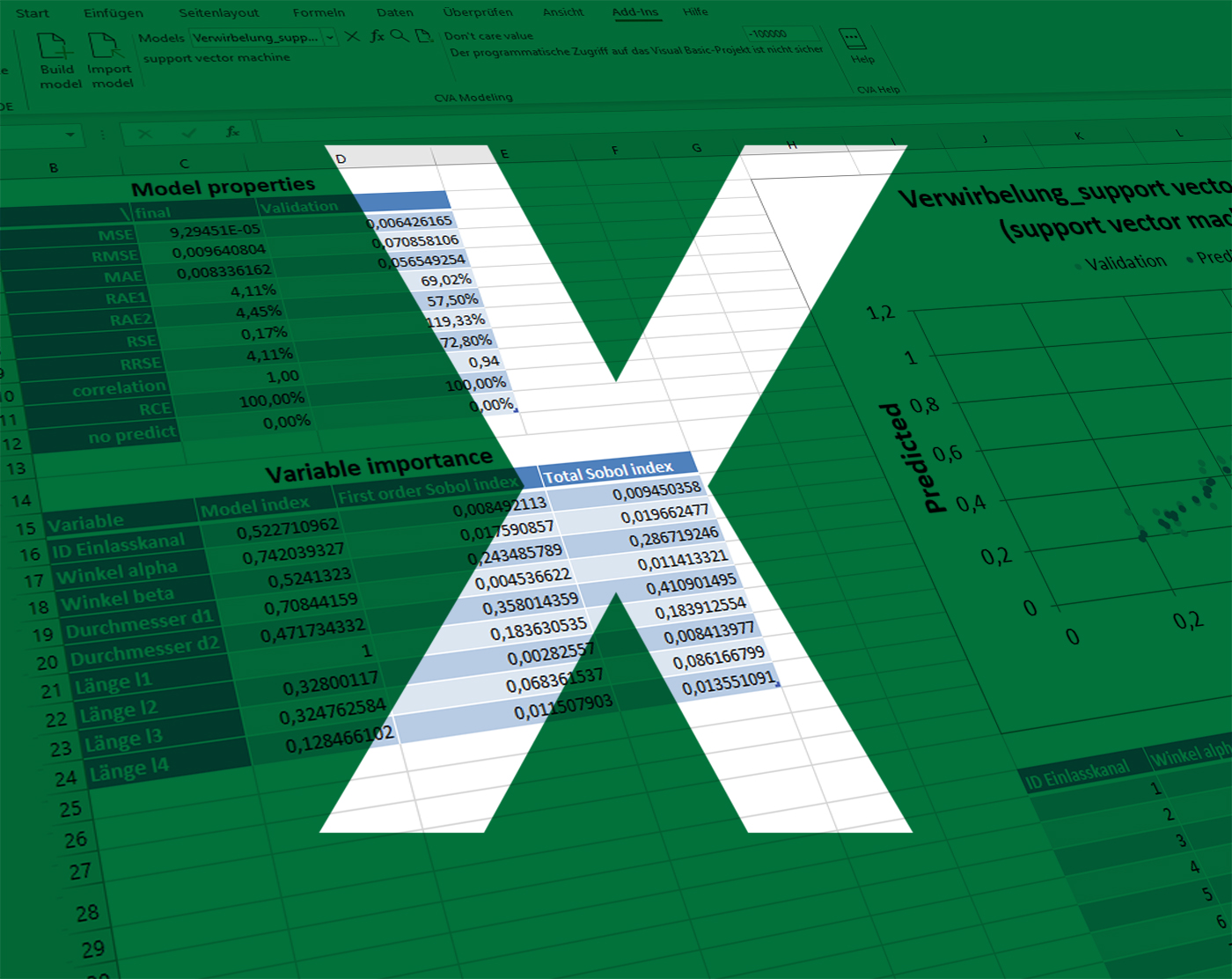
Automated Machine Learning in Microsoft Excel
Automated Machine Learning — shortly AutoML — is the key technology for data driven prediction with artificial intelligence. Our ClearVu Excel Add-In enables you to easily use this technology directly from the Excel user interface to build forecasting models for your data sets. The underlying technology is our powerful ClearVu Analytics software, which performs the corresponding calculations in the background. You can use this application to build forecasting models, for example, to predict the value of a real estate, depending on its characteristics and the surroundings. Or to predict the tumble effect created by an injector, depending on the injector’s geometry parameter setting. The potential application domains are unlimited, given whatever kind of data you have.
Automated Machine Learning in Microsoft Excel
Automated Machine Learning — shortly AutoML — is the key technology for data driven prediction with artificial intelligence. Our ClearVu Excel Add-In enables you to easily use this technology directly from the Excel user interface to build forecasting models for your data sets. The underlying technology is our powerful ClearVu Analytics software, which performs the corresponding calculations in the background. You can use this application to build forecasting models, for example, to predict the value of a real estate, depending on its characteristics and the surroundings. Or to predict the tumble effect created by an injector, depending on the injector’s geometry parameter setting. The potential application domains are unlimited, given whatever kind of data you have.
Excel add-in user interface in the ribbon
Excel add-in user interface in the ribbon

A few sample applications, picked from an unlimited range of possibilities:
A few sample applications, picked from an unlimited range of possibilities:
Build, import and use model
Key functionalities of our Excel add-in include the automated generation of a predictive model based on your data (build model) and the import of an existing model (import model). The quantitative model quality measures as well as graphical visualizations of model predictions are directly made available within Excel. This allows you to directly interpret and assess the models. The models can then be used as a cell function to predict the unknown properties of interest for new data records.
State-of-the-art machine learning algorithms are available:
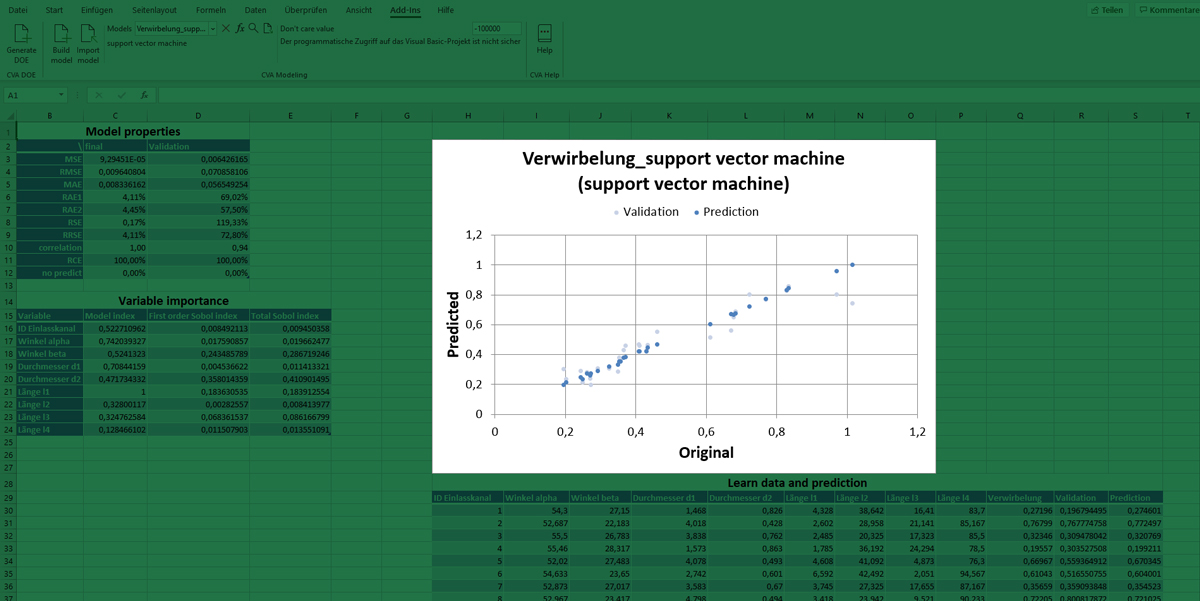
Build, import and use model
Key functionalities of our Excel add-in include the automated generation of a predictive model based on your data (build model) and the import of an existing model (import model). The quantitative model quality measures as well as graphical visualizations of model predictions are directly made available within Excel. This allows you to directly interpret and assess the models. The models can then be used as a cell function to predict the unknown properties of interest for new data records.
State-of-the-art machine learning algorithms are available:
Generate DOE
(Design of Experiment)
Our Excel add-in also supports the generation of an experimental plan, using the button >> Generate DOE <<. In case that no data is available yet, an experimental plan provides a set of experiment configurations which optimally cover the design space in order to collect as much information as possible with as few experiments as necessary. After conducting these experiments, the resulting data is used by the automated modeling approach. This process is particularly useful for planning laboratory experiments.
Generate DOE (Design of Experiment)
Our Excel add-in also supports the generation of an experimental plan, using the button >> Generate DOE <<. In case that no data is available yet, an experimental plan provides a set of experiment configurations which optimally cover the design space in order to collect as much information as possible with as few experiments as necessary. After conducting these experiments, the resulting data is used by the automated modeling approach. This process is particularly useful for planning laboratory experiments.
Use Case
Predictive models of house value, depending on its characteristics.
In this example we demonstrate how to create a model for predicting house prices depending on the home’s specific properties such as size, number of bedrooms, etc. To begin with, the selection of data is done as common in Excel. Right after that, a dialogue for starting the automated modeling process opens.
The quantitative model quality measures as well as graphical visualizations of model predictions are directly made available within an automatically created Excel sheet. This allows you to directly interpret and assess the models.
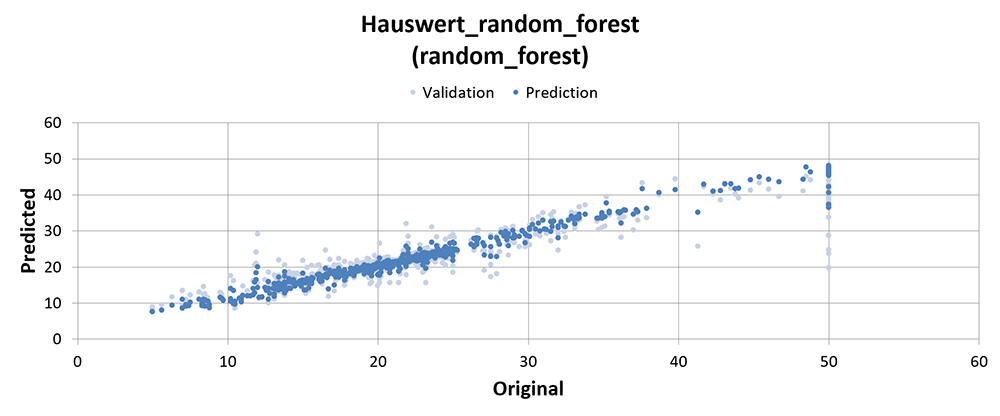
The models can then be used as a cell function to predict the unknown properties of interest for new data records. The models can be embedded in Excel forms and can be distributed for use by other users. This approach makes state-of-the-art machine learning algorithms such as support vector machines, decision trees, random forests, Gaussian processes and artificial neural networks easily available in Excel.
In the example above, our technology help predicting the price of a house depending on its characteristics. Of course, this technology can be applied in as many other domains as you can imagine, e.g., product development in cosmetics and chemical industry.
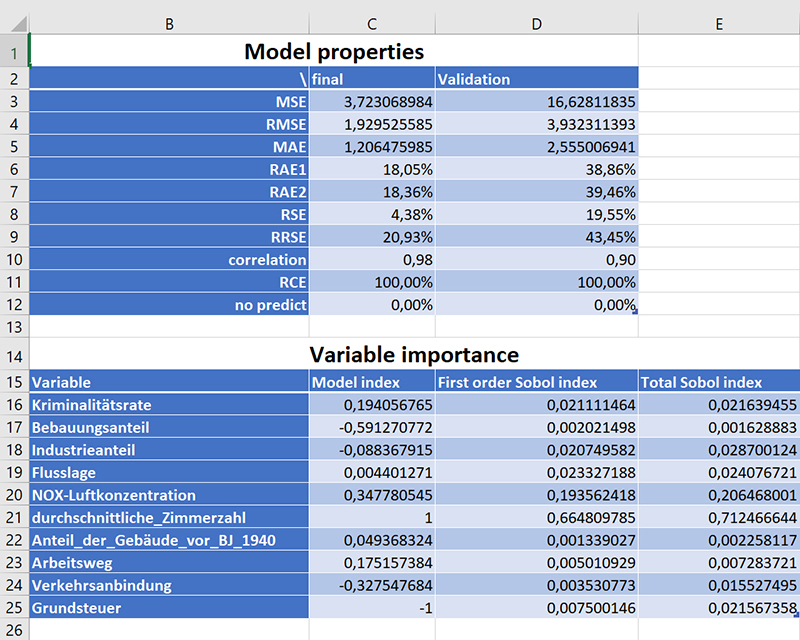
Use Case
Predictive models of house value, depending on its characteristics.
In this example we demonstrate how to create a model for predicting house prices depending on the home’s specific properties such as size, number of bedrooms, etc. To begin with, the selection of data is done as common in Excel. Right after that, a dialogue for starting the automated modeling process opens.
The quantitative model quality measures as well as graphical visualizations of model predictions are directly made available within an automatically created Excel sheet. This allows you to directly interpret and assess the models.

The models can then be used as a cell function to predict the unknown properties of interest for new data records. The models can be embedded in Excel forms and can be distributed for use by other users. This approach makes state-of-the-art machine learning algorithms such as support vector machines, decision trees, random forests, Gaussian processes and artificial neural networks easily available in Excel.
In the example above, our technology help predicting the price of a house depending on its characteristics. Of course, this technology can be applied in as many other domains as you can imagine, e.g., product development in cosmetics and chemical industry.

Price
Price
Other software
Other software
Our software ClearVu Analytics (CVA) provides optimal support for all applications of predictive analytics, product- and process optimization. The flexibility of the system also support a direct integration into existing workflows and interfacing with production processes.
ClearVu Solution Spaces (CVSS) supports you in the design of systems and components in the automotive industry. There are many restrictions to comply with and CVSS provides optimal flexibility for the identification of design variants.
Our ClearVu Python package provide the core functionality of ClearVu Analytics in Python. This makes automated machine learning easily available to the Python user – fast, automated, powerful and without any extra training effort.
Contact
How to contact us
Telephone
+49 231 97 00 340
Address
Joseph-von-Fraunhofer-Straße 20,
44227 Dortmund, Germany
Contact
How to contact us
Telephone
+49 231 97 00 340
Address
Joseph-von-Fraunhofer-Straße 20,
44227 Dortmund, Germany
